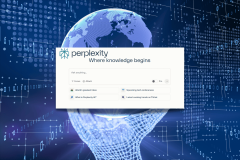Data is expanding, and so are the enterprise challenges to manage this growth. Most of these challenges boil down to the inability to accommodate the dynamic influx of data. Even the good old ETL is underperforming, resulting in 70% of failed initiatives, calling for reconsidering the data integration practices. But what went wrong?
In the traditional setup, the ETL captures data from multiple sources and schedules it into batches.
These data sets in the batches are then further extracted (E), transformed (T), and finally loaded (L) into the targeted system. Since the technique involves bulk processing and periodic updates, it causes delays in overall processing and the time to expected outcome. Ultimately, businesses are deprived of real-time insights.
Modern techniques such as ELT can capture real-time data by processing only the incremental changes from the last extraction. It enables organizations to utilize their resources optimally and focus on more resource-conscious data integration. It reduces latency and provides on-demand access to updated data, making prompt decisions.
Due to its outdated tech, ETL cannot put such vast amounts of real-time data into efficient utilization. It might have been the rockstar of the past decade, but the modern, rapid Web3 landscape asks for a lot more.
What are the different ways in which traditional ETL might be hindering your business growth?
Given the exponential increase in data volume, traditional ETL pipelines struggle to accommodate the rush, causing slower processing and uncertain increase in the cost. Not only does it suppress an organization’s ability to leverage data insights, but it almost nullifies the opportunity to innovate.
Moreover, the complex schema in traditional systems requires significant upgrading and maintenance efforts. Over a period of time, as businesses scale, the increase in sources makes it difficult for the pipeline to stay up to date.
Additionally, traditional ETL’s dependency on centralized processing invites single points of failure, compromising data integrity and system security.
What to do? Move from outdated tech and embrace modern alternatives to ETL.
To match the expectations of the impatient consumer, It is imperative for organizations, regardless of their scale, to break free and unlock optimal value from data. Using modern ETL tools, businesses can streamline the complex data landscape, something ETLs have been trying to do for a long time.
ELTs follow the Load-first approach wherein the raw data is initially loaded into the target system, and transformation occurs in-database or using distributed processing frameworks.
Change Data Capture (CDC), for example, processes high volumes of data as soon as it enters the framework, thereby actualizing real-time insights at the other end. Likewise, cloud-based solutions provide scalable and cost-effective data processing, ensuring enterprises can adapt and grow without hardware limitations. Wait for the next section, where I explain a detailed case study.
Data lakes and hubs allow enterprises to store and process vast amounts of raw data from multiple sources. This approach fosters democratization and enables cross-functional teams to analyze data.
A quick case study to understand the impact of modern ETL
A major telecom company operating amidst a high volume of real-time data struggled to manage the influx with traditional ETL systems. At one point, it almost gave up on improving its network performance largely because the data was scattered across multiple sources. Such an inefficiency hindered the timely responses to customers who had become impatient during the lockdown.
To move on to newer alternatives, the company implemented Skyvia, a cloud ETL platform that integrates data from multiple sources into a unified warehouse. Now, all data strategically stored and accessible at one point facilitated significant improvements in understanding the network’s health. Post implementation, it helped the organization achieve remarkable improvements in network performance, thereby reducing the outages by 50% and boosting the average speed of the network by 20%.
Furthermore, this led to significant cost savings and enhanced customer delight. With a reduction in data integration time from a week to a single day, the business could respond at the moment to all critical situations, escalations, and other ad-hoc events.
Ultimately, the company recorded a 10% enhancement in CX ratings, reclaiming its lost reputation.
Today, the telecom company is future-ready to thrive in the highly competitive market. Moving from outdated ETL practices to contemporary cloud-based solutions has led to significant growth and loyalty. Skyvia’s cloud-based data integration solution is a reminder for businesses that are tapping upon scalability and flexibility isn’t a tough game until they sign up for similar transformations. As we know, a SaaS landscape offers pricing models as per your consumption, drastically abbreviating upfront costs.
Make your enterprise future-ready
The traditional ETL approach stands as a barrier to innovation for modern enterprises. The inherent limitations of batch processing and complete data extraction no longer align with the demands of real-time decision-making and dynamic market landscapes.
As discussed, the inherent limitations of batch processing no longer suffice the in-the-moment decision-making expectations. Businesses must take a leap, embrace agile approaches, and extract true value from the data mountain. It’s no longer a choice but a strategic imperative.


















